Some gorgeous wildflowers bloom in the late spring in Iowa. In prairie habitats you may see spiderwort, prairie ragwort, yarrow, or prairie phlox blooming now. If you’re out and about in a wooded area, you may find Virginia waterleaf, wild geranium, and sweet William.
You may hardly notice today’s featured plant, unless it sticks to your shoes and clothes.
Bedstraw (Galium aparine), also known as catchweed bedstraw, grip grass, and stickywilly, among other things, is native to the entire United States except for Hawaii. “It is a rather weedy plant with insignificant flowers,” according to Illinois Wildflowers.
Nature enthusiast and occasional Bleeding Heartland guest author Lora Conrad commented recently in the Iowa Wildflower Report Facebook group, “now is the time to remove it from gardens whose plantings you wish to control before the seed are set, unless you are in need of edible but perhaps not so tasty food or herbal medicine to try.”
Left to its own devices, bedstraw will spread widely. I took all but one of the enclosed photos in or near our Windsor Heights yard.
Incidentally, a different Galium species was commonly called bedstraw because “the dried plants were used to stuff mattresses.”
The stems with whorls of six to eight leaves make bedstraw relatively easy to identify, even if it doesn’t hitch a ride on your clothing. The flowers are only about one-eighth of an inch across, providing a challenge to my photography skills.
This plant can do well on disturbed ground, next to a sidewalk or backyard steps.
Illinois Wildflowers notes that the stiff hairs on the stems and leaves allow “the plant to cling to adjacent vegetation for support.” You may also find bedstraw climbing fences or tree trunks.
I had trouble capturing these hairy stems and leaves, but I gave it my best shot.
You can see the hairs clearly in this lovely photograph by Lora Conrad.
The Friends of the Eloise Butler Wildflower Garden website notes,
Fertile flowers produce a dry 2-celled seed capsule that retains the hooked hair surface. Each cell has one seed. […]
The seeds, lightly roasted, are said to make a caffeine free coffee substitute.
You can see capsules forming in Lora’s picture as well as in the next two of my photographs. That’s a spring beauty flower on the left.
Bedstraw growing next to a brick wall.
The cleavers flowers look tiny compared to the (out of focus) spring beauty near the bottom of the frame.
Virginia waterleaf is blooming on the left.

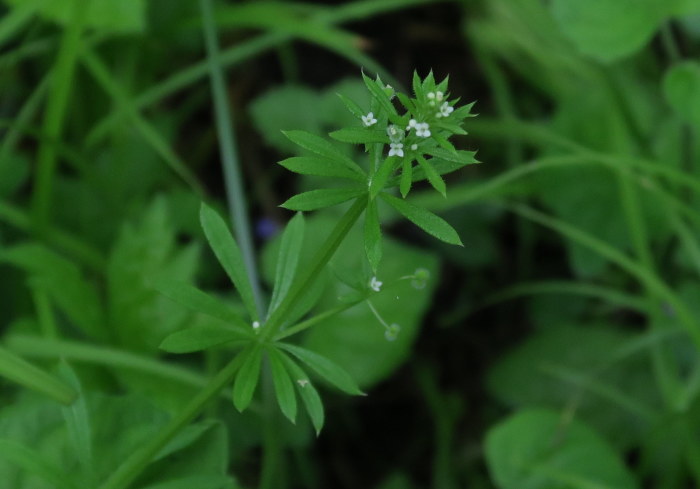
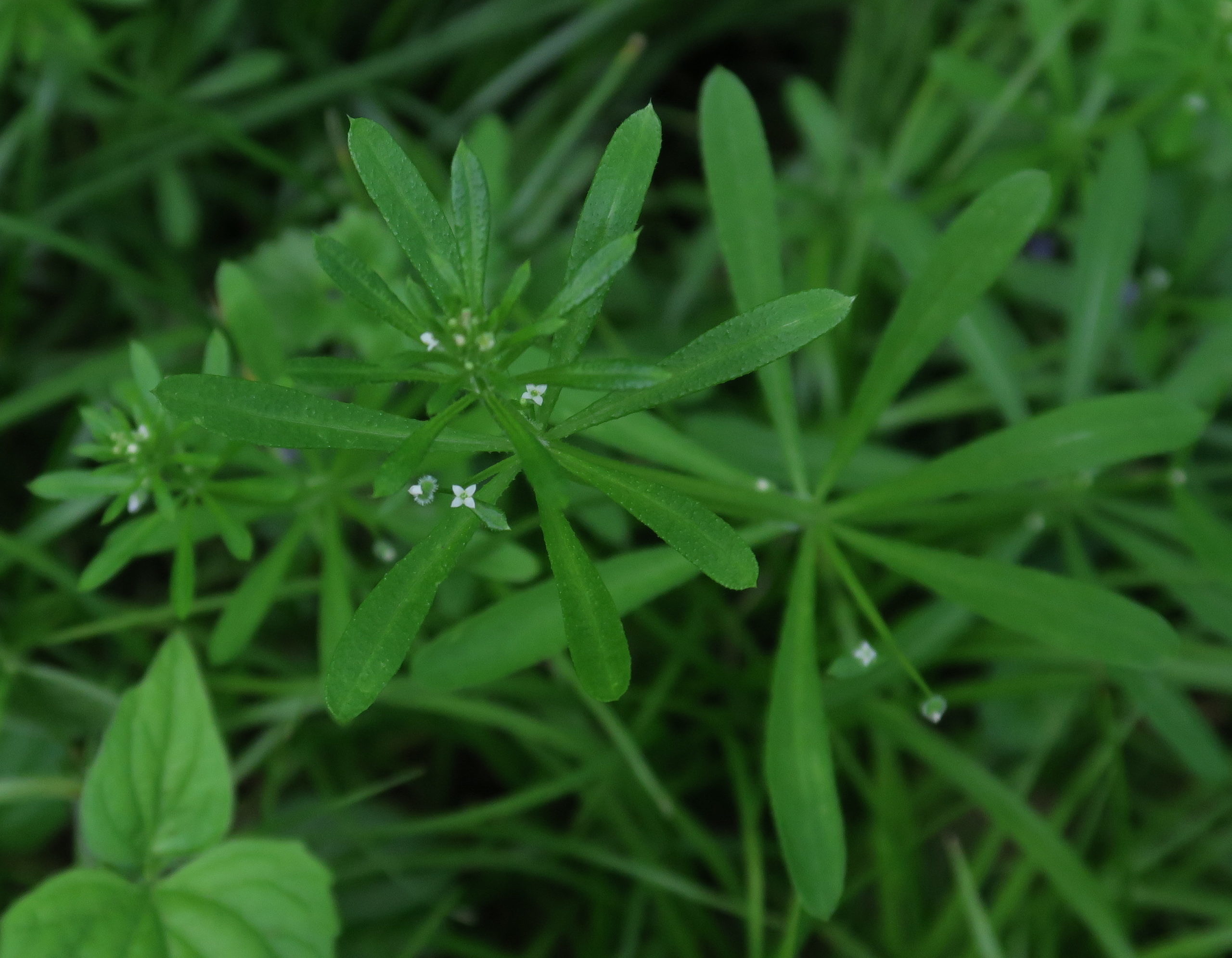
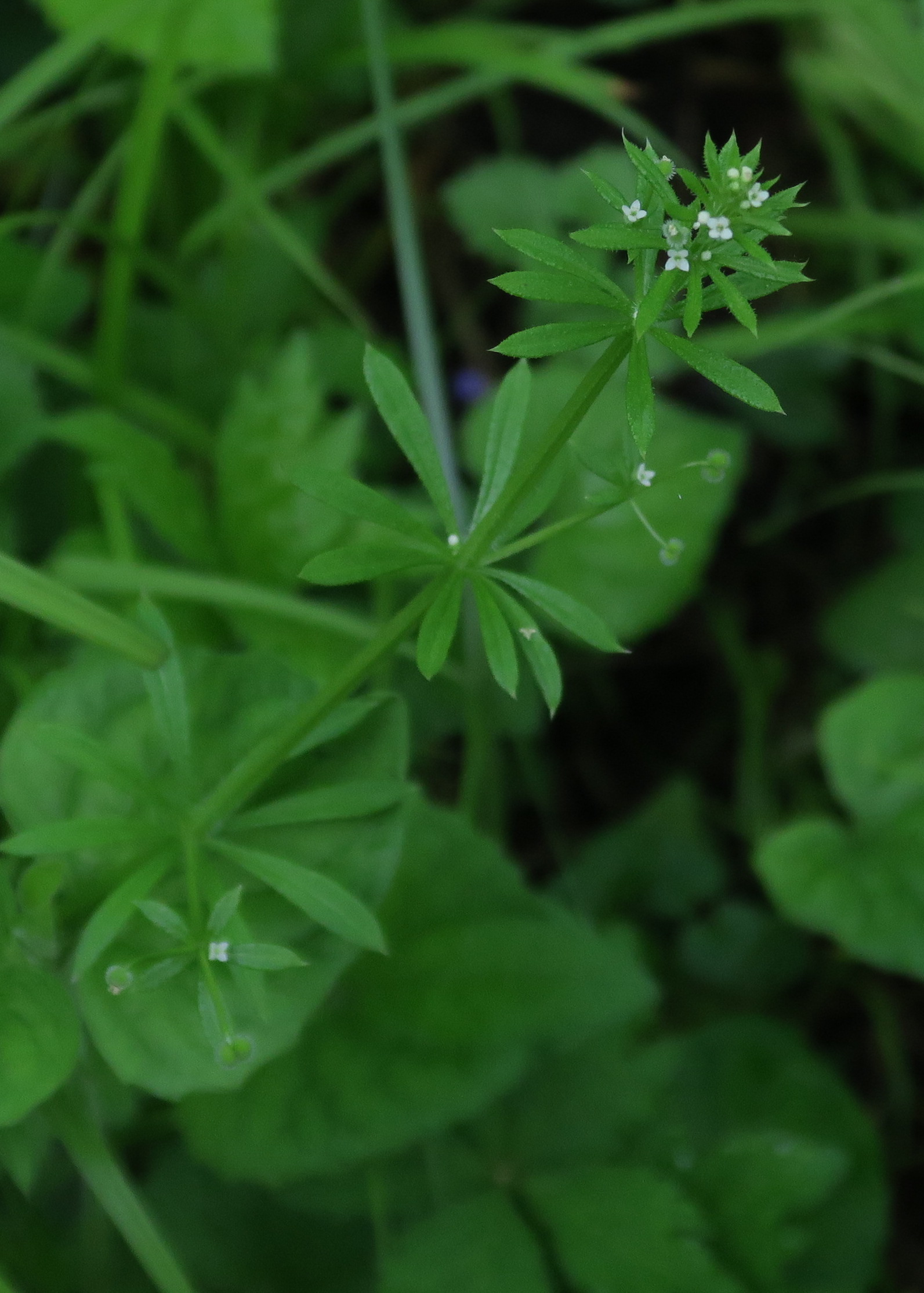
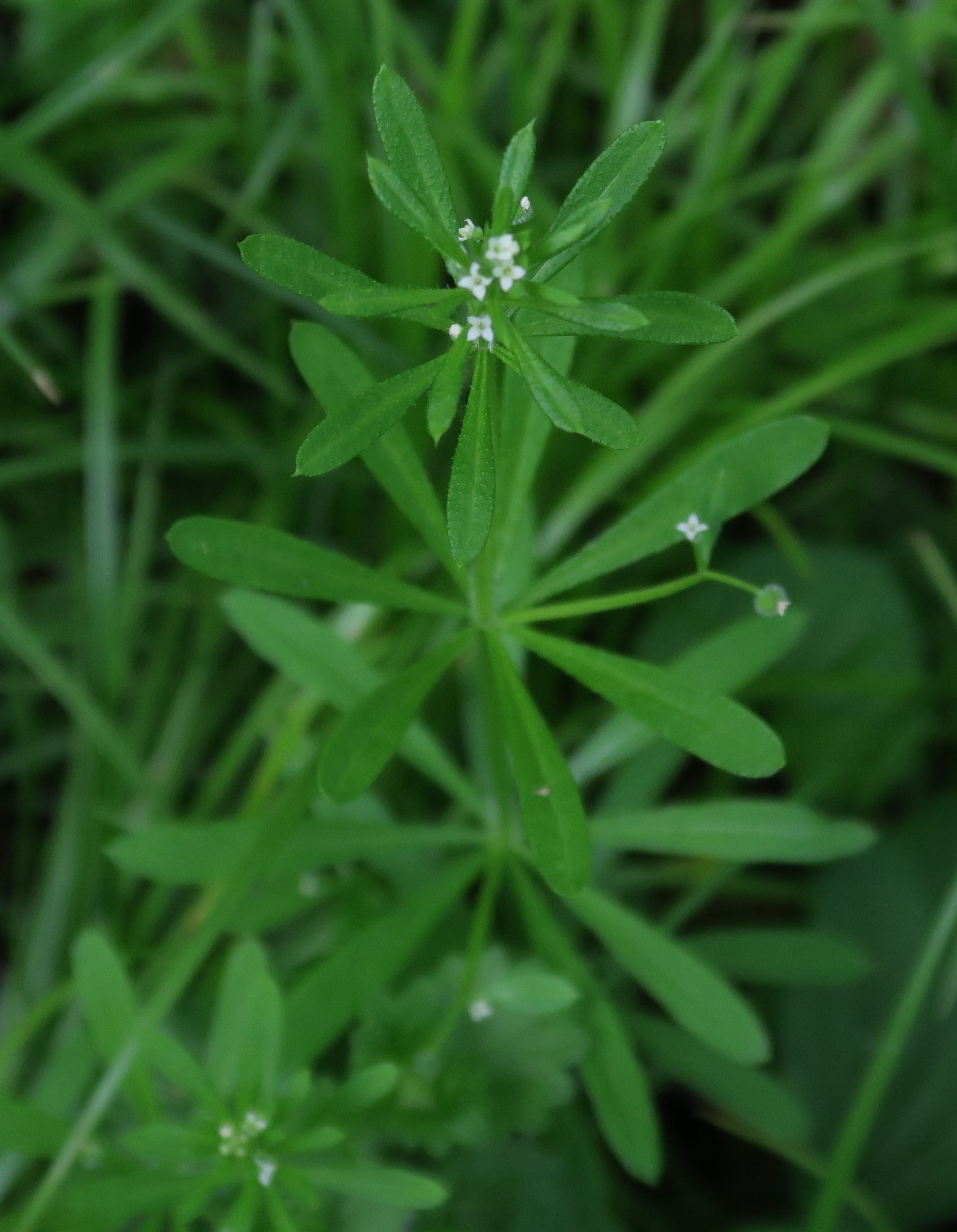
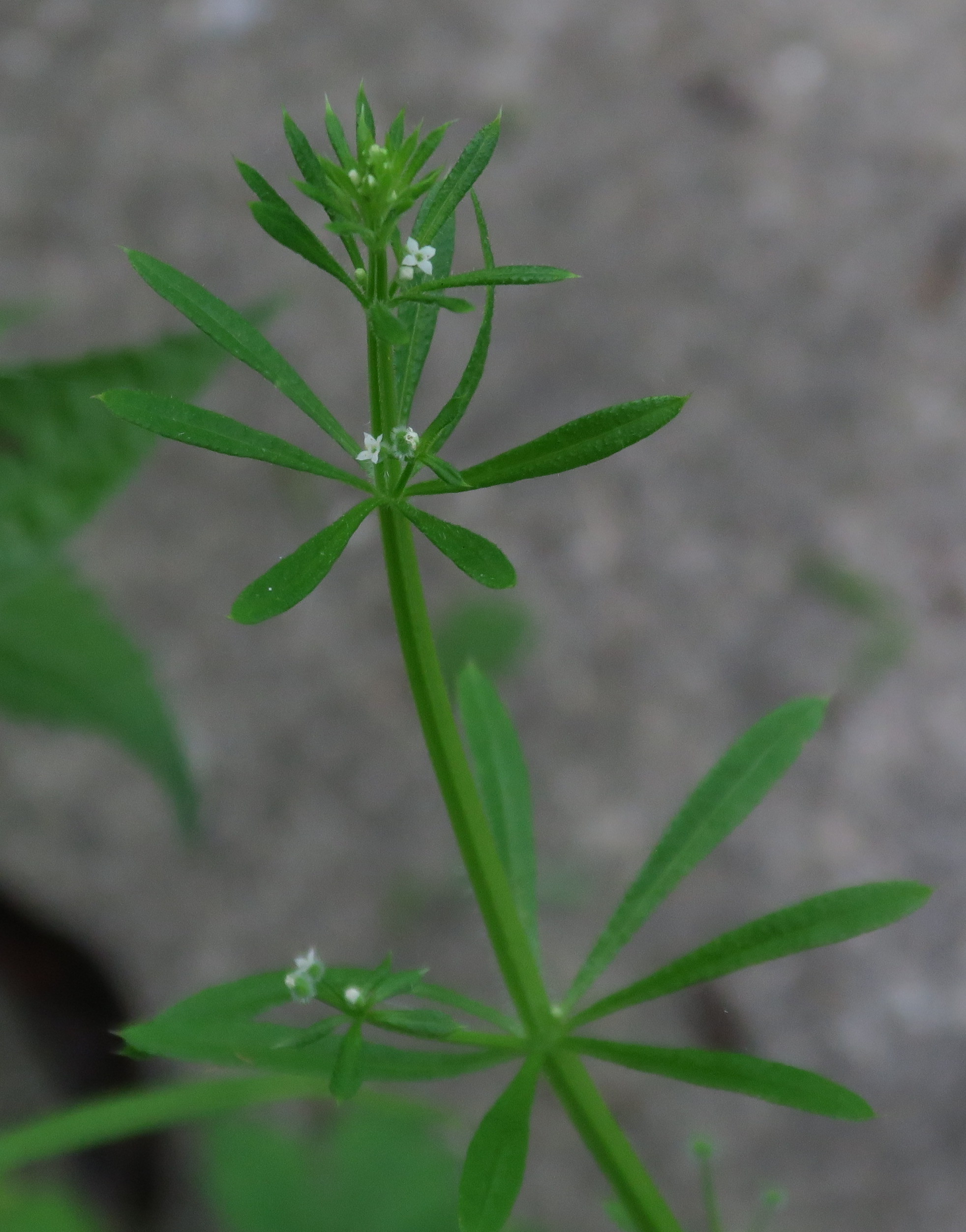
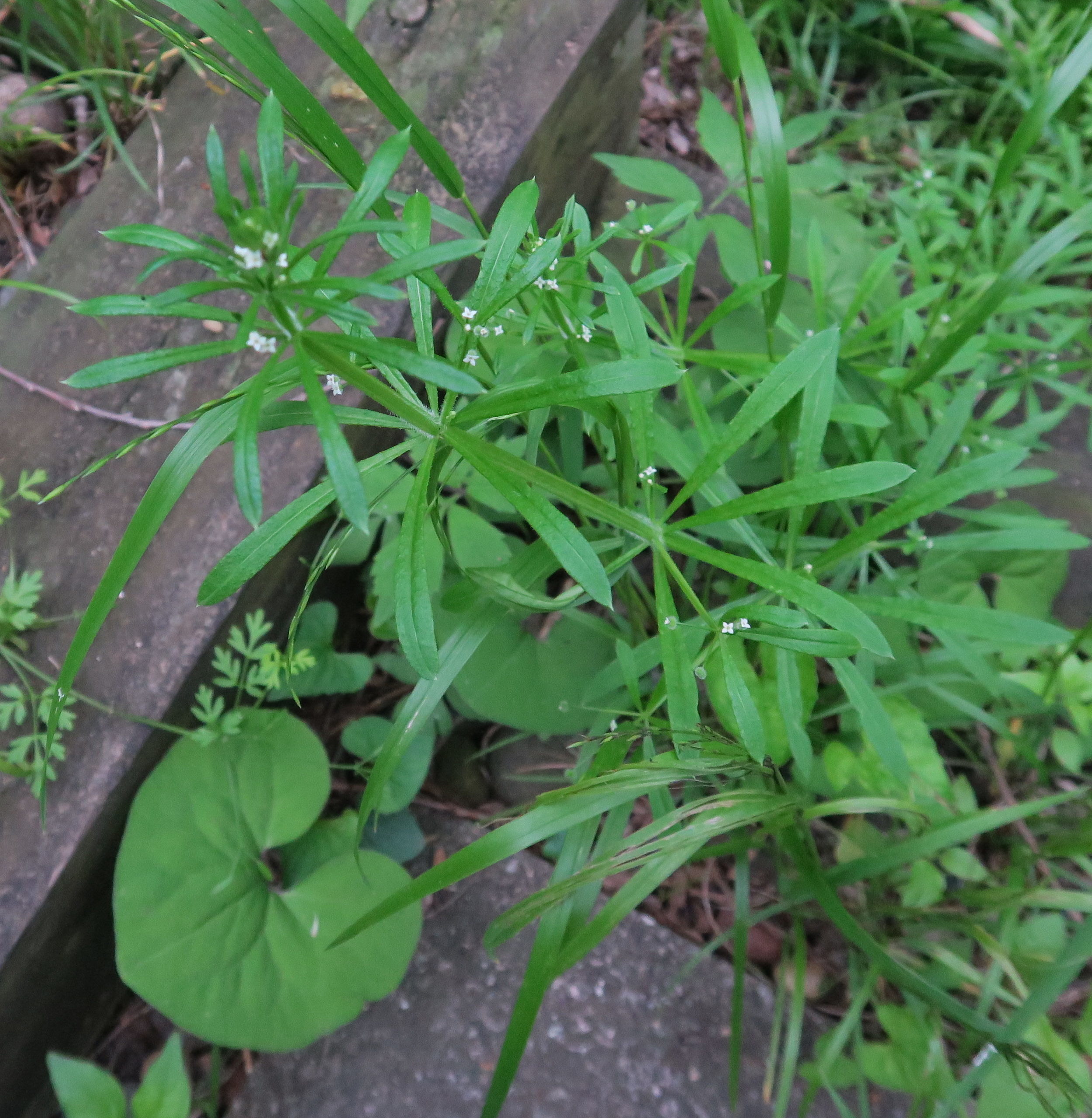
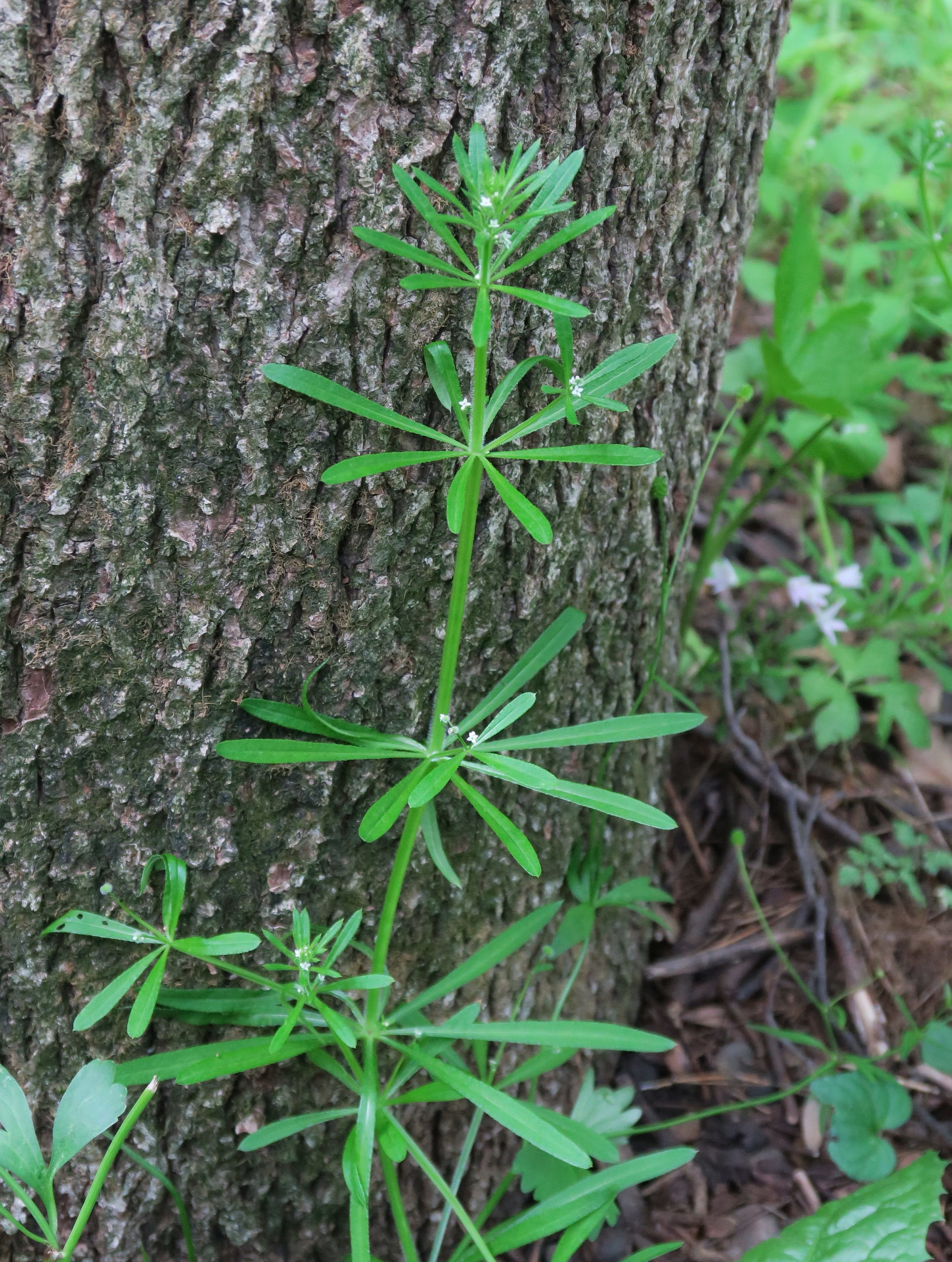
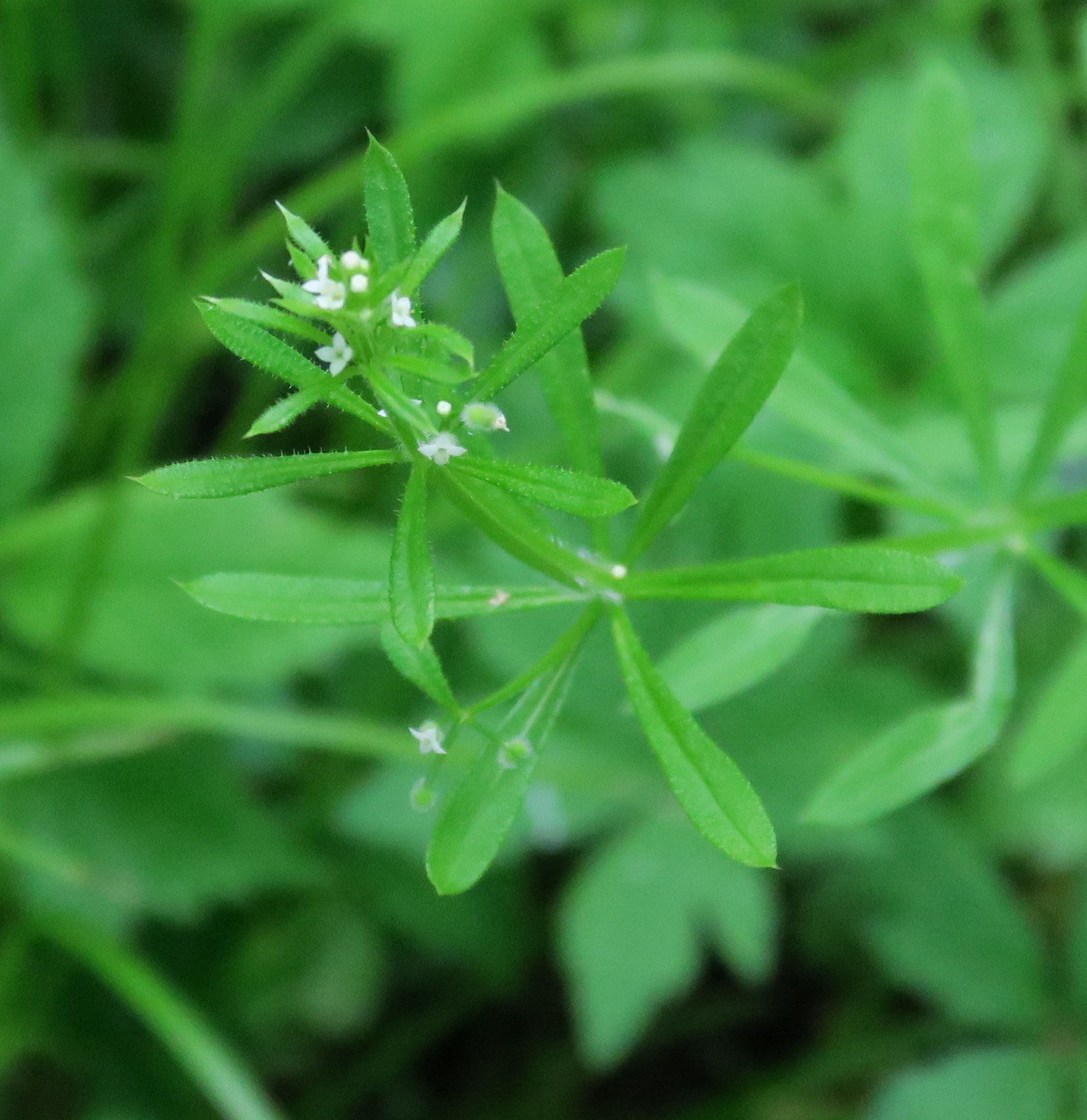
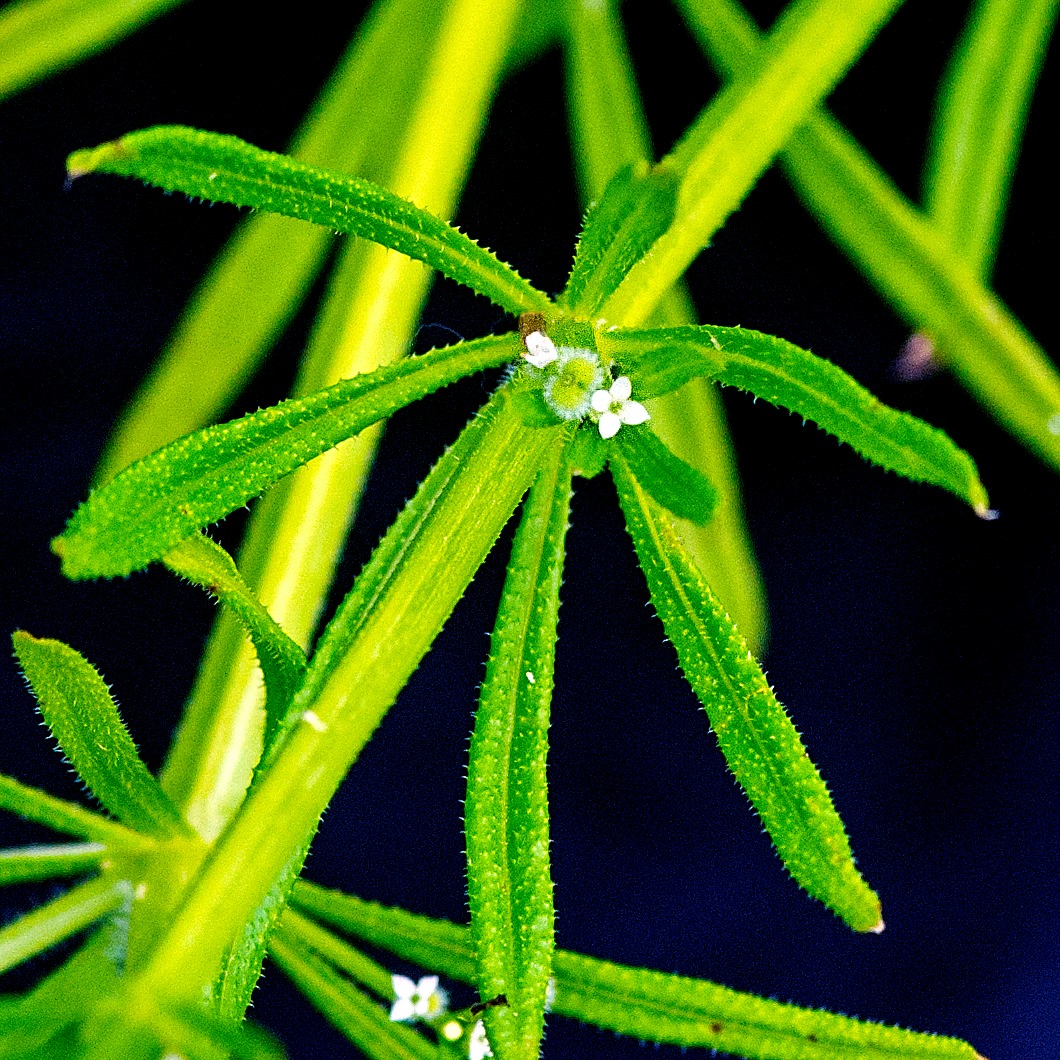
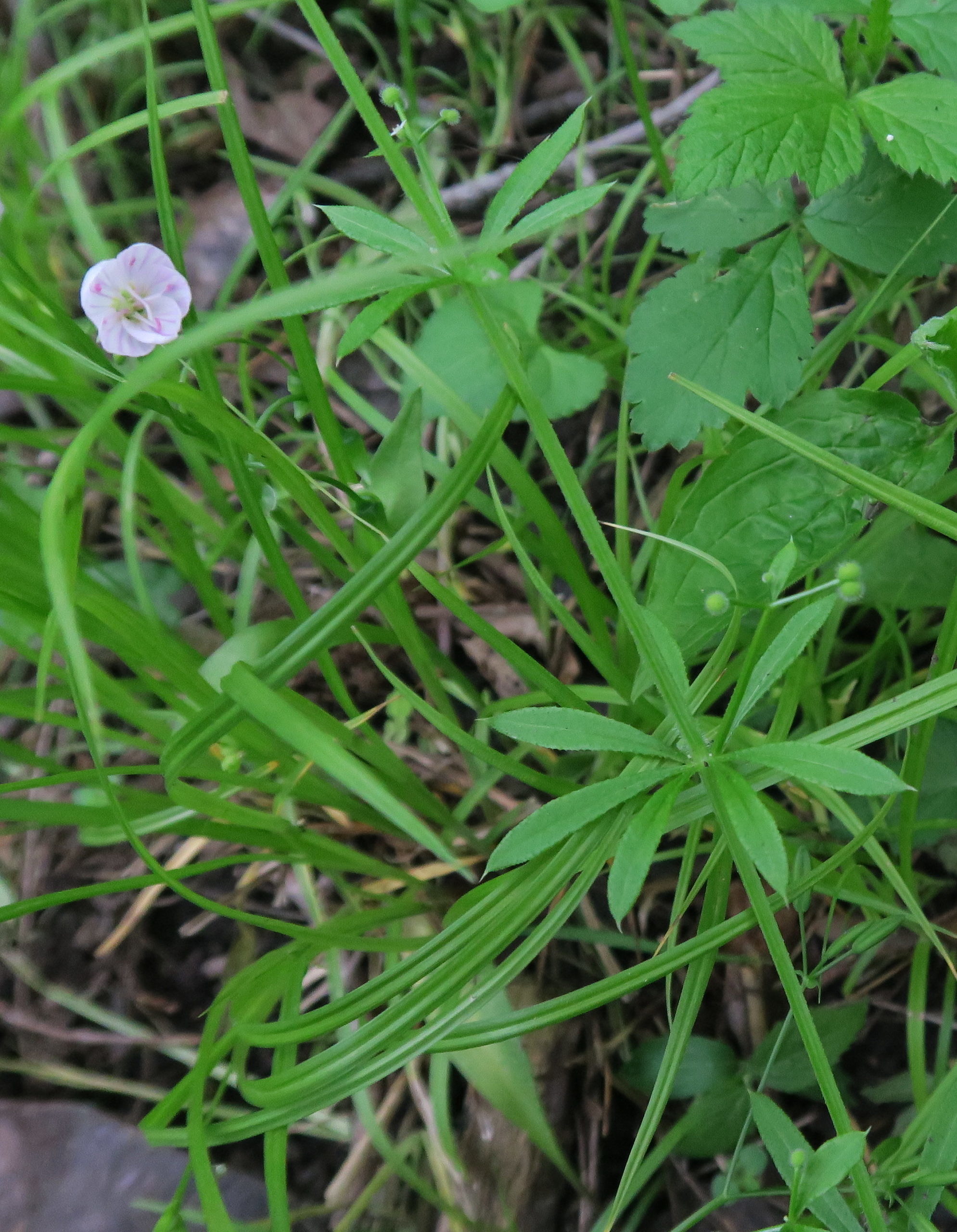
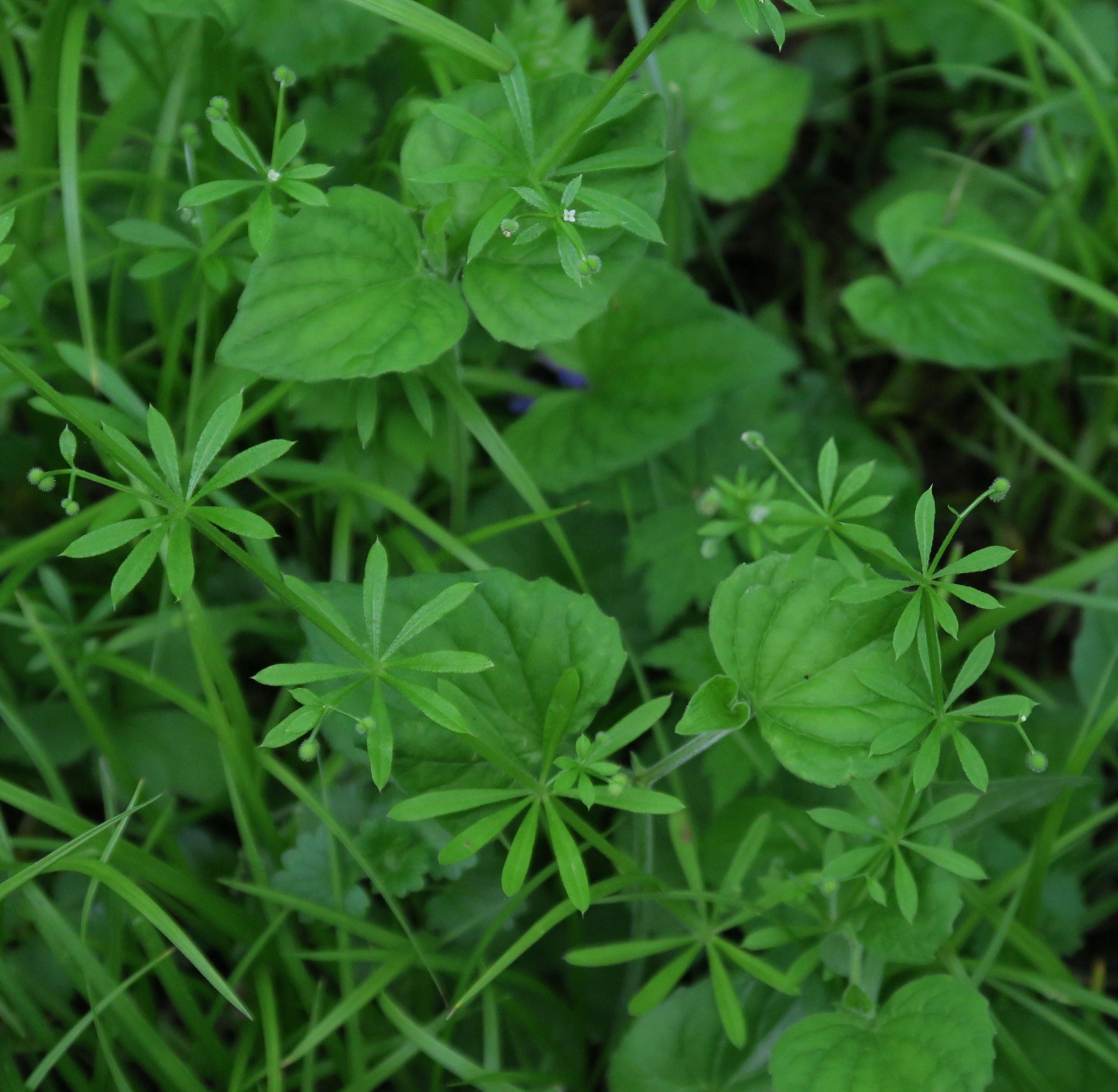
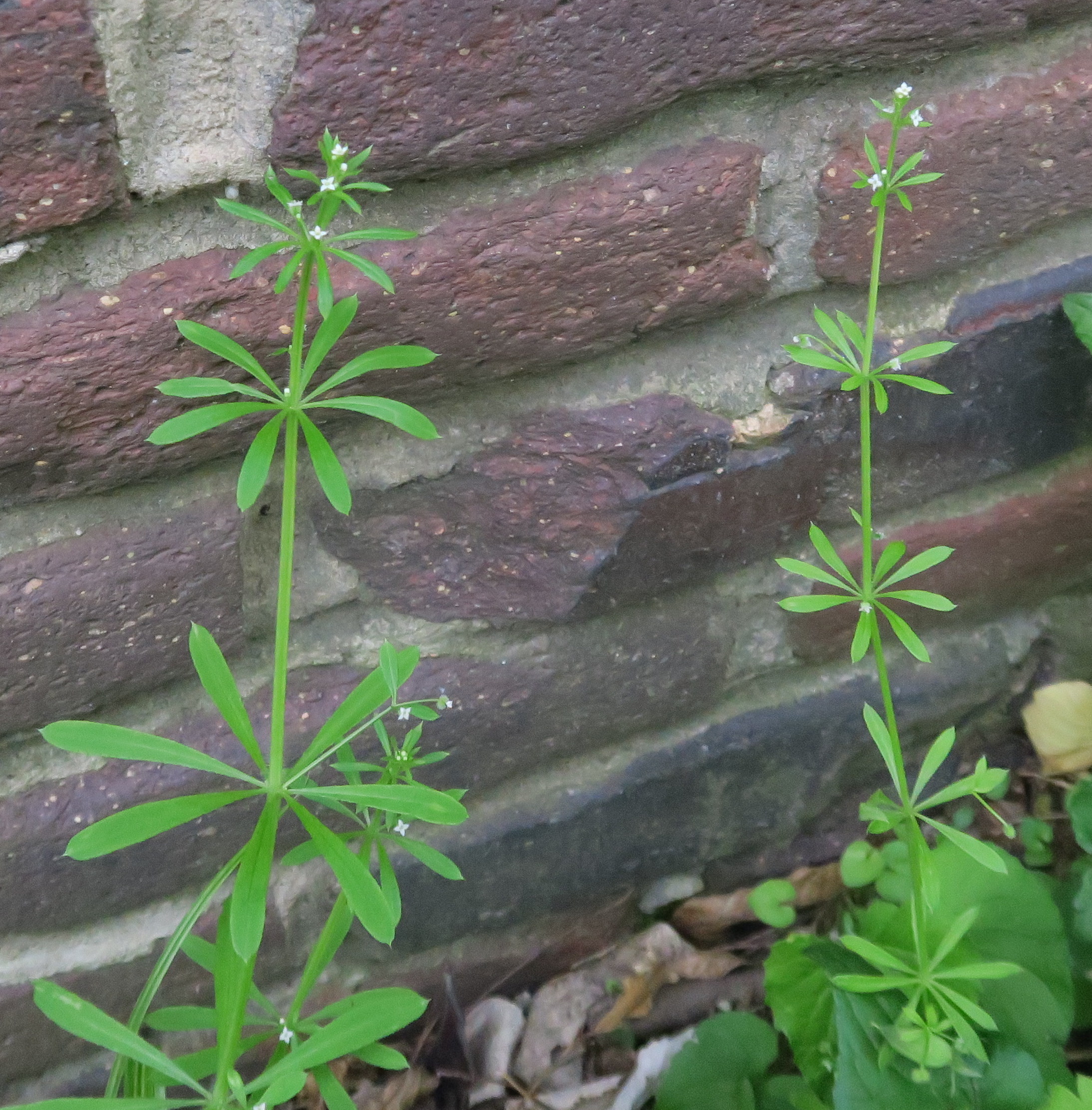
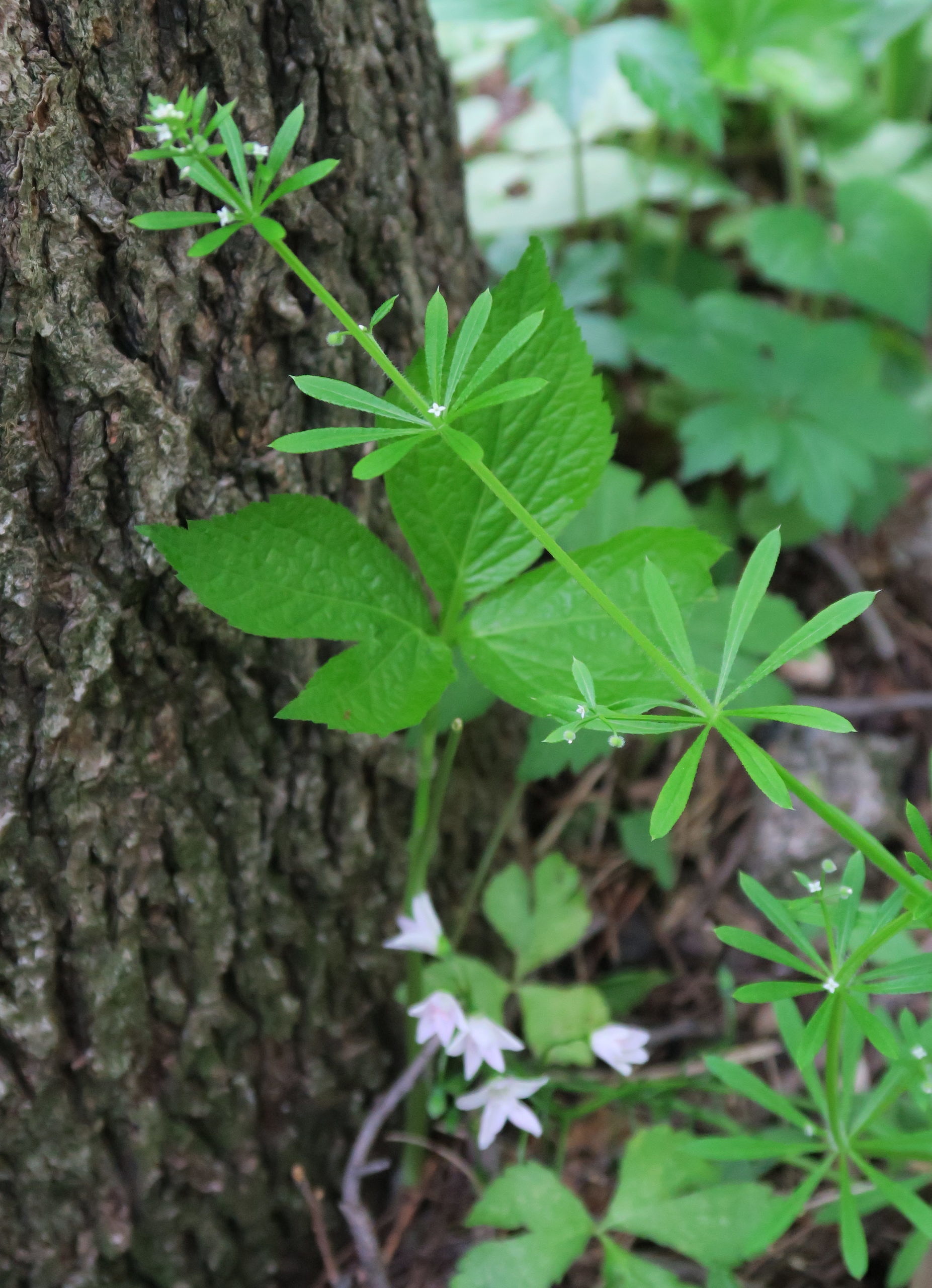
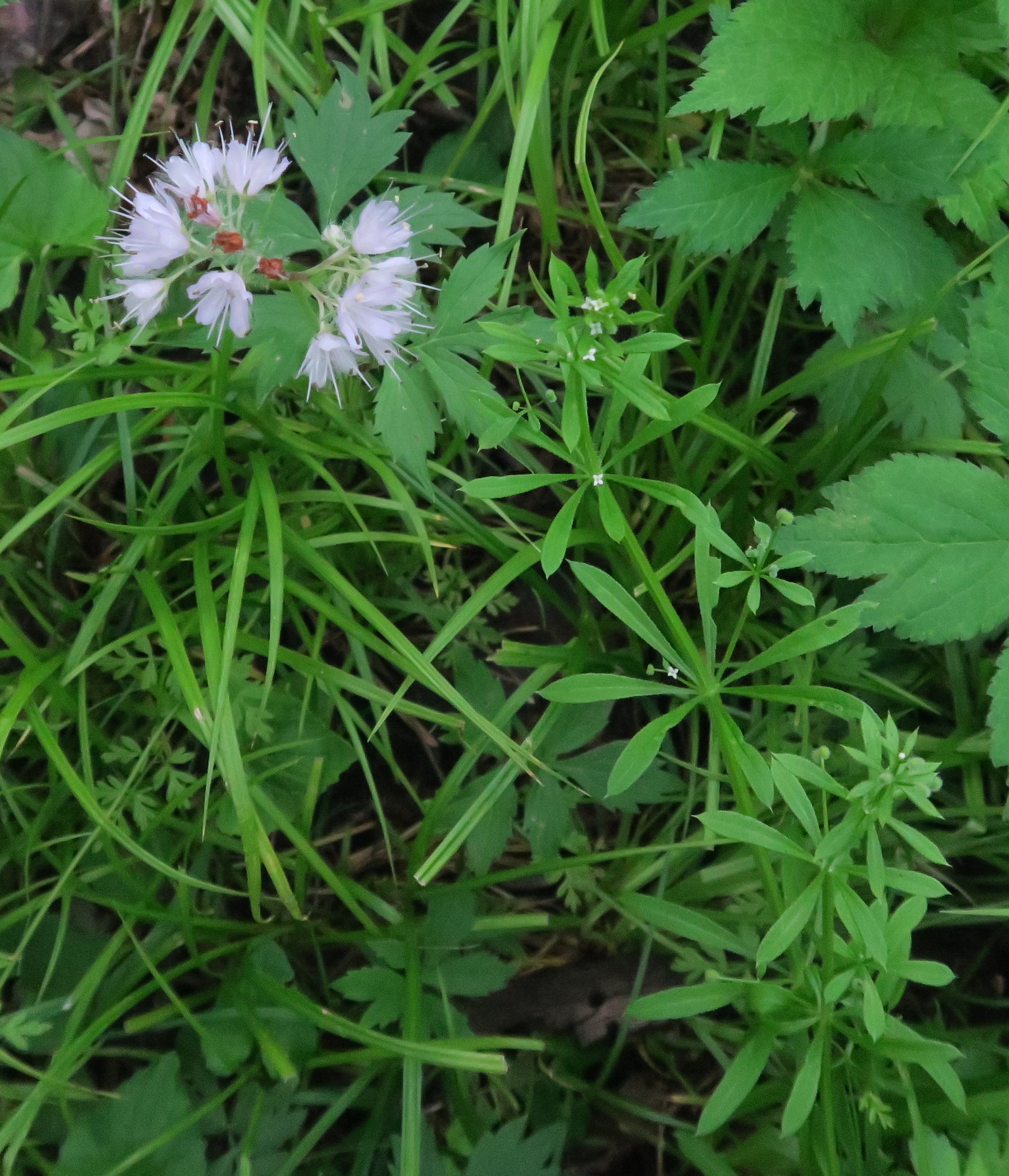
1 Comment
Galium
It’s true that cleavers can get carried away and spread a lot. But as a species, it’s a lot easier to keep under control than many small Eurasian invasive exotics, like vinca and creeping charlie. And as these photos show, cleavers is a beautiful plant in its own small way.
Collecting those little seeds to roast as a coffee substitute seems like it would be a lot of work!
PrairieFan Fri 5 Jun 12:29 PM